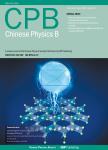Phosphine-free synthesis of FeTe2 nanoparticles and self-assembly into tree-like nanoarchitectures
Phosphine-free synthesis of FeTe2 nanoparticles and self-assembly into tree-like nanoarchitectures作者机构:State Key Laboratory of Superhard MaterialsCollege of PhysicsJilin UniversityChangchun 130012China College of Material Science and EngineeringJilin Jianzhu UniversityChangchun 130118China
出 版 物:《Chinese Physics B》 (中国物理B(英文版))
年 卷 期:2019年第28卷第10期
页 面:473-477页
核心收录:
学科分类:07[理学] 0805[工学-材料科学与工程(可授工学、理学学位)] 0704[理学-天文学] 0702[理学-物理学]
基 金:Project supported by the National Natural Science Foundation of China(Grant No.11874027) the China Postdoctoral Science Foundation(Grant Nos.2019T120233 and 2017M621198)
主 题:self-assembly transition metal tellurides phosphine-free Te precursor tree-like nanoarchitectures
摘 要:Manipulating the self-assembly of transition metal telluride nanocrystals(NCs) creates opportunities for exploring new properties and device applications. Iron ditelluride(FeTe2) has recently emerged as a new class of magnetic semiconductor with three-dimensional(3D) magnetic ordering and narrow band gap structure, yet the self-assembly of FeTe2 NCs has not been achieved. Herein, the tree-like FeTe2 nanoarchitectures with orthorhombic crystal structure have been successfully synthesized by hot-injection solvent thermal approach using phosphine-free Te precursor. The morphology, size, and crystal structure have been investigated using transmission electron microscopy(TEM), high-resolution TEM(HRTEM),and powder x-ray diffraction(XRD). We study the formation process of tree-like FeTe2 NCs according to trace the change of the sample morphology with the reaction time. It was found that the FeTe2 nanoparticles show oriented aggregation and self-assembly behavior with the increase of reaction time, which is attributed to size-dependent magnetism properties of the samples. The magnetic interaction is thought to be the driving force of nanoparticle self-organization.



